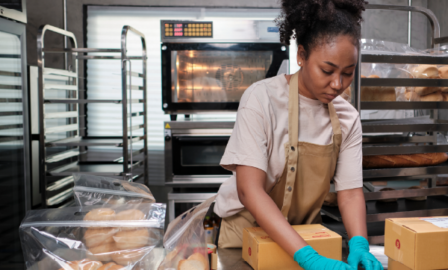The Battle for Stomach Share
Since the 1920’s, the customary method for obtaining food for the majority of the public has been at a chain supermarket store. This type of store reached market share peak in the late 1980’s and has experienced a slow but steady decline of 1% per year since.
One of the contributors to this decline has been a gradual shift in demand from the consumer towards healthier foods and the perception that pre-packaged foods are less healthy than raw, local produce. As a result, the concept of the food co-ops has taken hold.
With food co-ops, or Community Supported Agriculture (CSA), individuals become members by purchasing shares. Then they can receive weekly deliveries of the produce that are available, or some other models even allow consumers to shop in a more familiar store setting.
Over the last few years, the growth of the food co-op has been steady with approximately 200 new co-ops forming across the nation. Some co-ops have experienced 30% – 50% increases in business over the past several years, and this growth occurs at a time when grocery sales at large retailers have remained flat. The combined sales of these co-ops through the National Cooperative Grocer’s Association (NCGA) is $1.5 billion. Robynn Shrader, CEO of the NCGA, believes this growth is indicative of the shift in attitude in the country. “People are looking for a higher degree of empowerment in how their food is produced, how it impacts their community and the world at large.”
This growth has not gone unnoticed by some retailers. Select Whole Foods Markets have decided to serve as CSA drop-off and pickup locations. The company believes that by encouraging CSA, it is providing support for local farmers. And in return for this support, local consumers will use their store to fill the rest of their food needs
At the same time, companies like Pinnacle Foods are trying to overcome the perception that pre-packaged foods are less healthy. Through their brand, Bird’s Eye, the company is educating customers on the nutritional value of those same fresh products, only frozen. Similar to CSA’s, they stress the importance of using vegetables that are grown and harvested close to their manufacturing facility to lock-in the nutrients for consuming both inside and outside of traditional vegetable season. They are also using campaigns like Rewrite the Dinnertime Rules with Nickelodeon and Let’s Feed Kids Better to further engage and educate current and future consumers.
While still representing a small percentage of overall food sales, the rise of the food co-op is an interesting twist considering consumers are showing a greater awareness about the sourcing and production of the food they eat. However, with companies like Pinnacle and other food manufacturers trying to demonstrate local-to-them sourcing and nutritional value year round, the battle for stomach share will continue.


